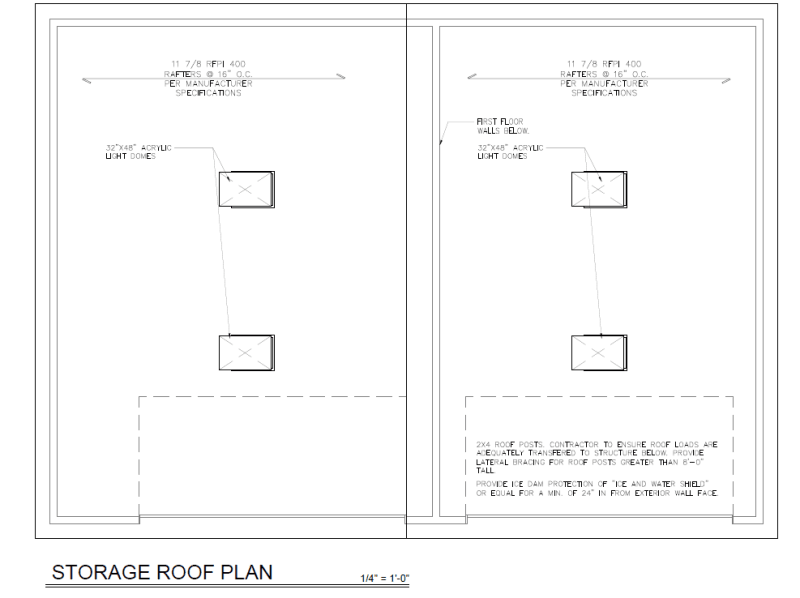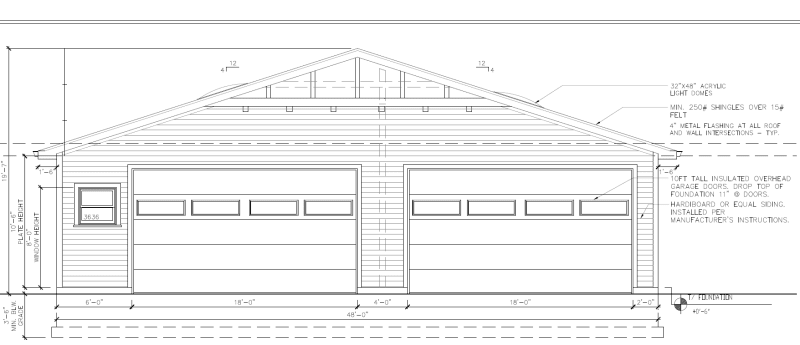mfstructural
Structural
Good morning, for some reason these wood roof framing scenarios rack my brain. I'm currently looking at a garage (48' wide x 34' depth) with scope to provide roof framing design, as the building official is requesting that what the arch has shown can work. I've attached the plan view and elevation. There are no rafter ties, the design as shown is an offset bearing wall with rafters. The client wants to use TJIs as roof rafters. As you can see the rafters on the right side of the garage cantilever to the left over a bearing wall and in turn support the ends of the left rafters at the ridge. My thought is that there should not be outward thrust if the right rafter is considered as a s.s. beam that picks up the left rafters. There would have to be an LVL or members along the ridge to make that connection. There is of course a horizontal component of the loading on the rafters which will induce thrust. I'm thinking that if the connection at the roof is sufficient to accommodate this horizontal component (thrust) then the design will be ok. I think hurricane clips will def be necessary at the exterior walls. My only concern is that if a collar tie is introduced, compression loads will be induced into the TJIs which is not allowed per manufacturer specs. When I look at the elevation though, I feel like there will be outward thrust and the model I created also shows outward thrust at the ridge. I am thinking of recommending a redesign and just having the roof ridge offset and in line with the bearing wall. This way, the TJI roof rafters can bear on the wall, but connections will still have to be made to resolve the horizontal component of the roof loading.




